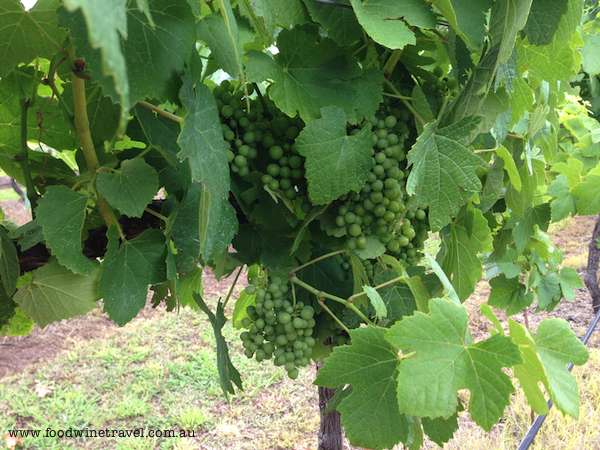 Published in Australian Wine Selectors, 2004.
Published in Australian Wine Selectors, 2004.
When influential American wine critic Robert Parker awarded 91 points to the 2002 Margan Family Verdelho late last year, the US and Canadian markets couldn’t get enough of the dry, spicy white varietal.
“We shipped everything we had to the US on the back of that review,” said winemaker Andrew Margan, a leading producer in Broke Fordwich.
This tiny sub-region of the Hunter Valley produces some of the world’s finest Verdelho from some of the world’s oldest Verdelho plantings. Located between Pokolbin and Wollombi, its unique micro-climate produces juicier-fleshed, later-ripening fruit with distinct varietal character.
Margan, who is president of the Broke Fordwich Winegrowers Association, attributes the quality of Broke Verdelho to the age of the vines. Many were planted in the late 1960s, early 1970s, though some date back to just after World War I. While this might not sound particularly old, Margan says there is so little Verdelho grown in the world, that it is even rarer to find some with age.
Broke Fordwich lies in the heart of the picturesque BrokeValley, the village of Broke nestling at the base of the Brokenback and Hunter Ranges on the Wollombi Brook. The ranges shelter the area from much of the rainfall that surrounding districts receive and this, together with the soil – which ranges from sandy loam to river flat alluvial soil, red volcanic soil and pockets of red basalt, not unlike the Coonawarra terra rossa – accounts for the area’s uniqueness.
Acknowledging its special characteristics, the Geographical Indications Committee gave Broke Fordwich its appellation in 1994. It was the first area formally recognised as a separate viticultural sub-region of the Hunter.
While the Winegrowers Association doesn’t align itself with any one particular variety, and Margan’s biggest seller is Semillon, he says the sub-region is becoming distinguished for its Verdelho, not just by consumers but also by the Hunter wine industry.
“We have a mixture of red basalt volcanic soil which gives (the wine) a richer riper character, and sandy soil that makes it lean and appley,” he said. “Whether you combine the characters, as we do, or keep them separate, what you get is something very distinctive.”
Margan is critical of show judges who he says do not “recognise the variety and understand the strength of it enough to reward Verdelho the way it should be”. However, public acceptance of the varietal has grown enormously in the past year, with many people seeking a dry medium-bodied alternative to Chardonnay.
Chardonnay remains the biggest selling white varietal because it is medium-bodied and complements a range of cuisines, and much the same could be said of Verdelho. “The average customer wants more flavour than Semillon or Riesling is going to deliver.”
The Margan Family Verdelho is a big wine with tropical fruit characters and lingering spice. The vines, which grew from cuttings that were taken off plantings dating from soon after World War I, yield less than two tonnes to the acre.
Last year, Margan and his wife, Lisa, added to their vineyard holdings with the purchase of one of Lindemans’ old Saxonvale vineyards. The 40ha property has 35-year-old vines including low-yielding Shiraz, Semillon and Chardonnay.
Margan makes wines for a number of growers in the area. With two science degrees, a hands-on apprenticeship under the late Murray Tyrrell and the experience of over 30 vintages in Australia and Europe, he manages his vineyards carefully so that the grapes can be picked at optimum ripeness, making them approachable while young but still having cellaring potential.
The Margans see Shiraz and Semillon as their flagship wines, and their Semillon is definitely a force to be reckoned with. Riper than many, it is full and soft with citrus and grassy characters. They also do a Botrytis Semillon.
The 2002 Margan Family Shiraz is spicy and peppery with soft tannins but an interesting complexity. The vines yield on average only one tonne an acre, producing great flavour concentration. A small amount of mourvedre planted within the block adds a slightly floral character.
With around 52 vineyards and wineries in Broke Fordwich, and more than a quarter of the Hunter’s production coming from the area, it is hard to believe that just one generation ago there were only three vineyards in the area. There had been an earlier phase of production, however.
After World War 1, the land around Broke was subdivided into the Fordwich Soldiers Settlement Purchase Area, and many of the returning soldiers planted grapes on their 10 acre lots. Most were forced to leave between 1919 and 1930 due to poor grape prices and severe hail storms in 1929 and 1930 that decimated crops.
The Tulloch family took over many of the farms, selling the grapes to large Pokolbin wineries. Lindemans had the biggest holdings in the 1970s, but sold off its vineyards progressively from the mid 1980s.
Coal mining and agriculture are still big industries in the area, but today, grapes have replaced dairy cattle as the predominant agricultural activity. A reminder of the area’s dairying history can be found at Mount Broke Wines, where Phil and Jo McNamara have established their quirky Cow Cafe in a former dairy.
Open seven days a week from11am to 4pm, and on Friday nights for dinner, the café overlooks a picturesque vineyard leading down to the river, where the rich alluvial river flats produce some exceptionally goodShiraz.
Mount Broke has bottled its 2003 Verdelho, 2003 Semillon, 2002 Cabernet/Merlot and 2002 Barbera under screw-cap, the Barbera especially one to watch out for. Only 80 cases were released and none was picked in 2003.
Catherine Vale Wines makes two Italian reds, Dolcetto and Barbera, and will release its first Verdelho in 2004. It is opening a spectacular new cellar door shortly.
The French call it terroir but the late Bill Ryan preferred to talk about “somewhereness” when referring to the elusive combination of micro-climate, soil and aspect that lifts one wine above another. It was the search for somewhere special that led Bill and his wife, Bliss, to look beyond the traditional Hunter grape-growing areas in Pokolbin and Rothbury and buy an old dairy property on the outskirts of Broke.
When they bought Broke Estate on Monkey Place Creek in 1988, they were among the viticultural pioneers who helped Broke Fordwich forge its distinct identity. Fellow vigneron Max Lake provided invaluable inspiration and encouraged them to concentrate on Cabernet Sauvignon, Cabernet Franc, Chardonnay and Sauvignon Blanc rather than the traditional Hunter varieties, Shiraz and Semillon.
Bill believed the climate and the deep, fertile soils would stand him in good stead and most vintages have borne out his theory. He quickly realised his vines were more vigorous than those at Pokolbin, so he enlisted the help of viticulturalist Dr Richard Smart to devise more appropriate trellising and canopy management, leading the way for other growers who followed suit.
In 1995, the Ryans bought Minimbah, a grand 1870s homestead surrounded by 1000 acres of agricultural land, 12 acres of which have been planted with Chardonnay andShiraz. Minimbah is not open to the public, but the Broke Estate vineyard is, with the cellar door located in a quaint 1890s cottage crammed with nostalgia.
The Broke Estate range includes Chardonnay, Cabernet Sauvignon, Semillon and a quaintly named dessert wine Lacrima Angelorum (“Angel’s Tears”). Made from Sauvignon Blanc, it is produced in the Tuscan style without botrytis. The vines are severed at the trunk, leaving the fruit to dry on the trellis till they are almost like sultanas. A second Ryan label includes a cheaper, ready-to-drink Free Run (Unoaked) Chardonnay and Cabernet Blend.
Son William says the labels deliberately make no reference to the Hunter Valley.
“We believe that regionality is very important with premium wine, that Broke Fordwich is a genuine region in its own right and that Broke Estate has its own particular micro-climate. While we’re obviously part of theHunterValley, we regard our particular location as having significant differences to the Pokolbin-Rothbury area traditionally associated with the Hunter mostly because we’re a little bit further inland and have a few more hills separating us from the ocean.”
The Ryans’ other son, Matthew, and his wife Tina say the cellar door business is steadily growing, “with more and more people making their way to Broke looking for a more relaxed and unique experience. They like the fact that there are so many boutique growers here and that in most instances it is the winemaker/winegrowers who offer the wine tastings at the cellar door.”
Matthew and Tina will be releasing their own premium label in April, and will be opening a new cellar door onMilbrodale Road. Tina says the Idlewild label will initially include six wines.
“The range will include everything from Shiraz, Merlot, wild yeast Chardonnay, unwooded Chardonnay, Barbera, Cabernet Franc, Cabernet Sauvignon and a winemaker’s blend, but the line-up will be different each year, depending on which was the best fruit each year,” Tina said.
One of the bigger producers in Broke Fordwich is Poole’s Rock, owned by Macquarie Bank chairman, David Clarke. He wanted a bolt hole to escape to at weekends and, a keen wine buff, had long held a desire to venture into grape-growing.
Since its first vintage in 1990, the estate has earned a reputation for its finely crafted Chardonnay, served in many of Sydney’s top restaurants. The late Murray Tyrrell described the property as the “viticultural showpiece of the Hunter Valley”.
In 1994, Clarke expanded his holdings with the purchase of a 13 ha property on the banks of the Wollombi Brook near Broke. He named it Cockfighter’s Ghost after a local legend about a horse named Cockfighter which drowned in the river 175 years ago.
The vineyard is planted to Chardonnay and Semillon, and a small block of old-vine Shiraz more than 50 years old. Whereas Poole’s Rock is an estate range, fruit for the Cockfighter’s Ghost label is sourced from both the property and from other parts of Australia.
One vigneron who gave up his career to follow his passion is Michael Hope, who left pharmacy to buy a vineyard at the base of the Wollemi Ranges in 1994. Hope Estate produced its first vintage in 1997 and last year exported wine to the United Kingdom, United States, Japan and New Zealand. The line-up includes Semillon, Verdelho,Shiraz, Merlot and a hugely successful Chardonnay.
Paul and Gail Nightingale’s winemaking business came about because of a bet, but within a few short years Nightingale Wines was exporting to Asia and Britain, as well as being sold aroundAustralia.
So particular are the Nightingales about quality that they didn’t release a Semillon in 2001 or 2002 because it wasn’t up to the standard they thought it should be. Now they are back with an elegant 2003 Semillon with racy acidity and lifted citrus notes. Their Chardonnay is a lovely, buttery wine, their Merlot smooth and velvety and their Shiraz has the peppery spice notes which characterise Hunter Shiraz. All three were aged in American oak.
Their Café Nightingale, set in a beautifully manicured vineyard, offers indoor and alfresco dining from Thursday to Sunday,10am to 4pm. There are winery tours on weekends, and winemaker’s dinners on the first Saturday of every month.
Boutique producers include Bainton Family Wines, whose Wollemi Semillon is made from 70-year-old non-irrigated vines, and Louis Laval, an organic producer which charges an extraordinary $100 for its Chambourcin. Winemaker Roy Meyer says it walks out the door.
Elysium Vineyard produces a consistently good Verdelho in limited quantities, and provides guest accommodation in an historic ironbark cottage. Krinklewood’s cellar door is set in beautiful Provencal-style gardens.
Wattlebrook Vineyard supplies most of its grapes to major wineries but each year keeps a small portion for its own wines. The best grapes are hand-selected from over 80 acres of Chardonnay, Verdelho, Semillon and Shiraz vines, and the wines are snapped up by Sydney restaurants.
Like Wattlebrook, the Margan Family can’t keep up with demand. They planted another eight acres of Verdelho last year, because they were always falling short.
“With so little Verdelho grown around the world,” said Andrew, “there’s enormous opportunity for Australia to corner a significant market.”
© Christine Salins

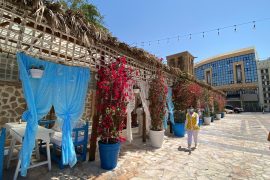
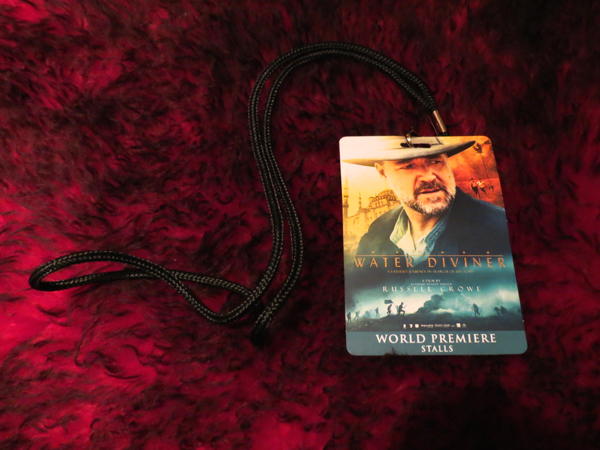
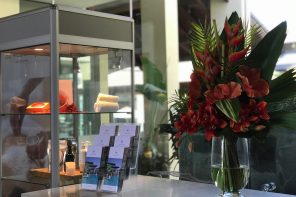
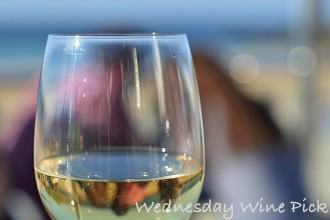
Hi, i am trying to get in touch with Bliss, she was a very good friend of my uncle, Tedd Dunn, my sister (deb) and i would love to talk to Bliss about some travels with my uncle. I would really appreciate you passing on my e-mail address so as she may contact me, thank-you so much, Lee Browning.